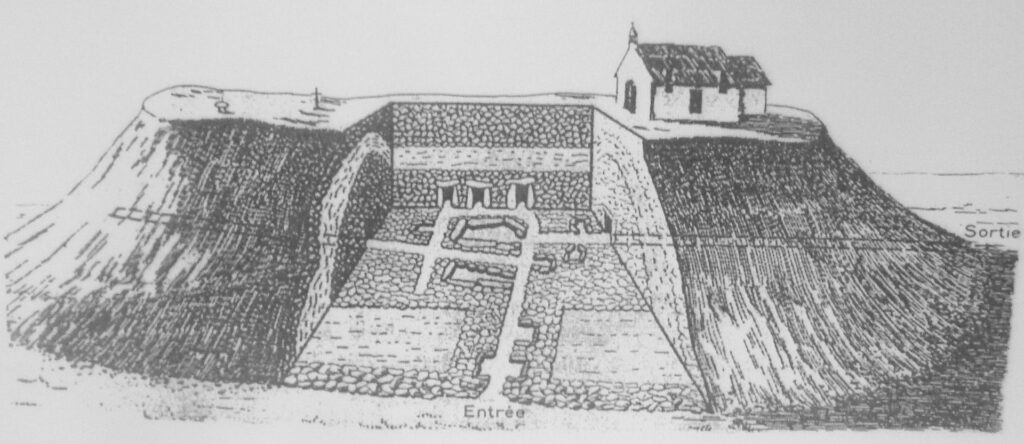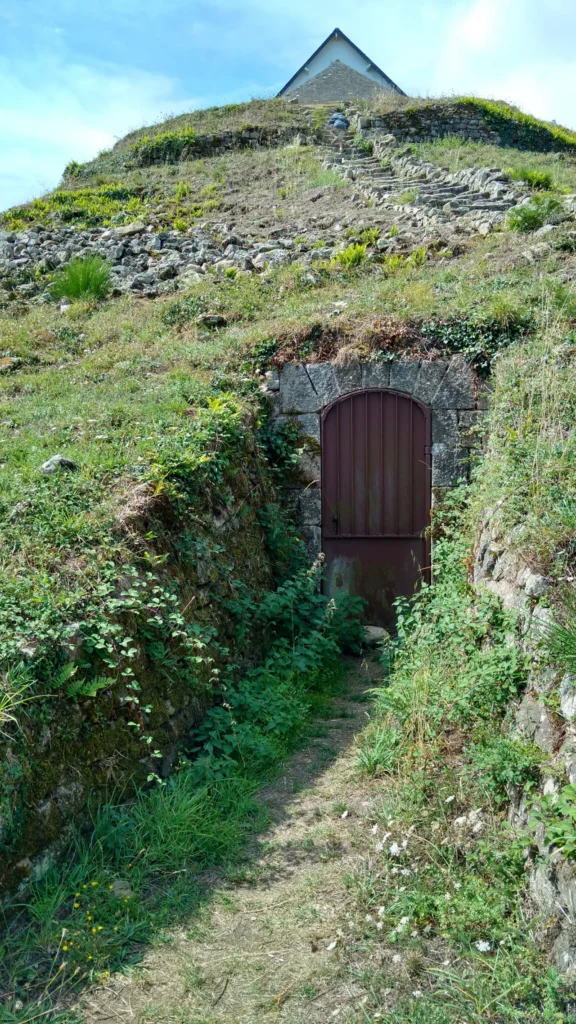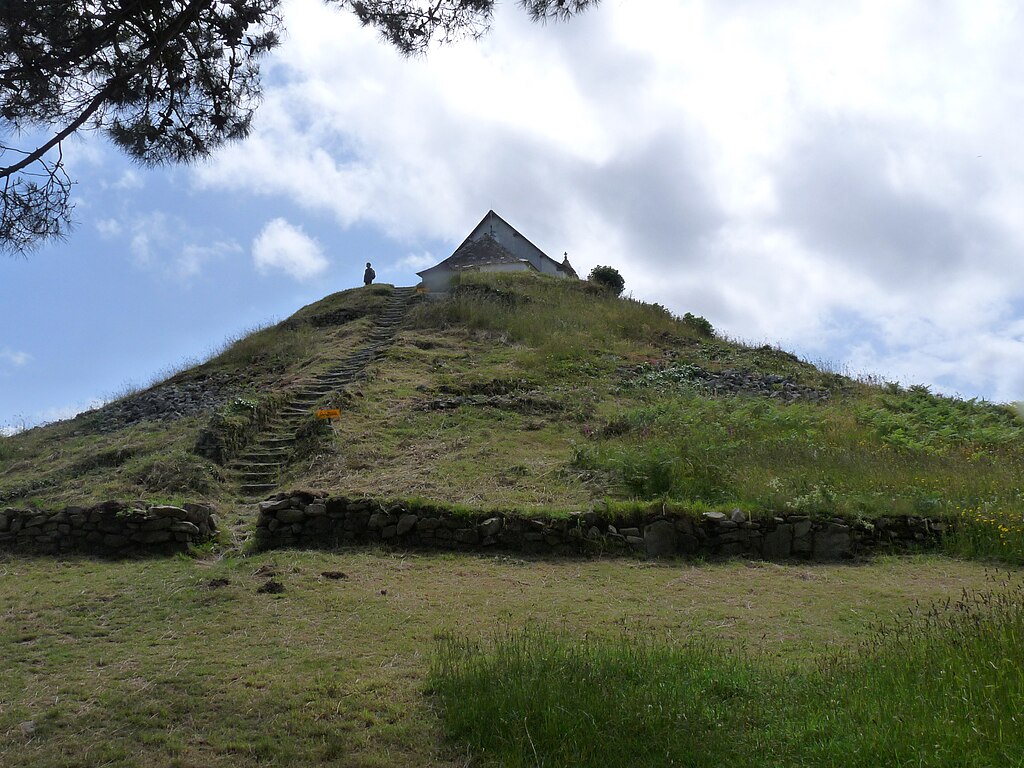Table of Contents
ToggleIntroduction to the Saint-Michel Tumulus
The Saint-Michel Tumulus, located east of Carnac in Brittany, France, is one of the most remarkable prehistoric structures in Europe. Constructed during the fifth millennium BCE, this ancient grave mound holds the title of the largest megalithic tumulus in continental Europe. Its sheer size, historical significance, and archaeological findings make it a key site for understanding Neolithic society and culture.
Physical Characteristics of the Monument
Dimensions and Structure
The Saint-Michel Tumulus is an imposing structure, measuring 125 meters (410 feet) in length, 50 meters (160 feet) in width, and 10 meters (33 feet) in height. Built from a combination of earth and stones, the tumulus exemplifies the technical skill of its builders. Its dimensions highlight the monumental effort and organization required for construction, suggesting a community-driven project of great significance.
Complex Interior Design
Initial excavations revealed a central vault containing artifacts of high value. Later investigations uncovered even more intricate internal features, including a second dolmen and fifteen small stone chests, or cists. This internal complexity indicates that the tumulus served not just as a single burial site but as a collective or evolving funerary monument.

Archaeological Discoveries
1862 Excavation
The first major exploration of the tumulus took place in 1862. Archaeologists discovered a central burial chamber containing prestigious grave goods, including polished axes, pearls, flint tools, and sillimanite artifacts. These items were likely symbols of power and status, reflecting the significance of those interred within the mound.
Findings by Zacharie Le Rouzic
Around 1900, renowned archaeologist Zacharie Le Rouzic conducted further excavations. His discoveries of a second dolmen and additional cists expanded the understanding of the tumulus’s use and importance. These findings suggest that the monument may have been a site of collective memory, used by successive generations for burials and ceremonies.

Cultural and Historical Significance
A Symbol of Neolithic Society
The tumulus serves as a window into Neolithic life. Its construction required advanced engineering knowledge, a coordinated workforce, and significant resources. These factors indicate the existence of a structured and hierarchical society, with leaders capable of organizing large-scale projects.
Prestigious Funerary Goods
The presence of valuable grave goods underscores the social stratification of the time. Items such as polished axes and pearls suggest a culture that honored its elites with symbolic and material wealth, highlighting the spiritual and societal importance of burial rituals.

Preservation and Recognition
Monument Historique Status
In 1889, the Saint-Michel Tumulus was officially classified as a “Monument historique,” underscoring its importance as a national heritage site. This designation ensures its preservation and highlights its value not only to France but to global archaeological studies.
Tourism and Education
Today, the tumulus attracts visitors and researchers alike, serving as a focal point for exploring Brittany’s rich megalithic landscape. Its accessibility and historical importance make it an essential stop for those interested in prehistory.

Analysis: What Makes the Saint-Michel Tumulus Unique?
- Scale and Engineering: The size of the tumulus sets it apart from other European megalithic structures, showcasing the advanced capabilities of its builders.
- Cultural Insights: The tumulus provides rare insights into Neolithic rituals, social hierarchies, and the symbolic use of material goods.
- Evolving Use: The discovery of multiple burial sites within the mound suggests its role as a dynamic monument, reflecting changes in societal practices over time.
- Regional Significance: Its location in Brittany, a region dense with megalithic monuments, connects it to a broader cultural and ceremonial network.
Conclusion
The Saint-Michel Tumulus stands as a testament to the ingenuity, spirituality, and social organization of Neolithic societies. Its vast dimensions, intricate internal design, and rich archaeological finds make it a site of unparalleled importance in the study of prehistoric Europe. As a preserved national treasure and a source of ongoing research, the tumulus continues to captivate scholars and visitors, bridging the past and present through its monumental legacy.
